Red-breasted chat is wel heel erg mooi. Gaaf verslag weer en gefeliciteerd met 6500. 7k is een eitje....
Arjan's Biggest Year
In 2016 I will attempt the ultimate in global birding, to break the world record in birdwatching, this involves observing more than 6000 species in a single year!
Like my predecessor Noah Strycker I will count heard-only birds, but I will differentiate between heard-only- and seen species to make sure my list stays comparable.
During my 'Biggest Year' I will raise money for the groundbreaking Birdlife Preventing Extinctions Programme in a collaboration with Vogelbescherming Nederland and the Dutch Birding Association. This programme aims to prevent the extinction of all globally threatened bird species by applying an active, innovative and highly effective methodology.
Arjan's Biggest Year is supported by:
| 2015 |
|
The countdown has started. 23 december 2015 22 |
| 2016 |
|
January 1-8 6 januari 2016 5 |
|
January 9-14 15 januari 2016 8 |
|
January 15-23 27 januari 2016 10 |
|
January 24-30 2 februari 2016 1 |
|
January 31 - February 7 8 februari 2016 4 |
|
February 8 - 15 16 februari 2016 11 |
|
February 16 - 20 21 februari 2016 6 |
|
February 21 - 24 28 februari 2016 1 |
|
February 25 - March 1 1 maart 2016 3 |
|
March 2 - 5 8 maart 2016 7 |
|
March 6 - 9 13 maart 2016 6 |
|
March 10 - 19 21 maart 2016 9 |
|
March 19 - 24 27 maart 2016 1 |
|
March 25 - 31 31 maart 2016 4 |
|
April 1 - 2 9 april 2016 |
|
April 3 - 13 15 april 2016 |
|
April 14 - 17 21 april 2016 |
|
April 18 - 23 25 april 2016 |
|
April 24 - 29 30 april 2016 1 |
|
April 30 - May 9 9 mei 2016 3 |
|
May 10 - 16 19 mei 2016 1 |
|
May 17 - 21 25 mei 2016 2 |
|
May 22 - 28 1 juni 2016 2 |
|
May 28 - June 1 5 juni 2016 |
|
June 2 - 6 11 juni 2016 5 |
|
June 7 - 15 18 juni 2016 |
|
June 16 - 23 28 juni 2016 3 |
|
June 24 - 28 30 juni 2016 1 |
|
June 29 - July 3 8 juli 2016 1 |
November 23 - December 1: Mexico (1)
4 december 2016 · Arjan Dwarshuis · 11194 × bekeken
http://www.arjandwarshuis.com/#biggestyear
http://world.observation.org/arjan.php
PLEASE MAKE A DONATION NOW
November 23th BIRDING THE YUCATAN PENINSULA
Last night I had arrived in Cancun, the renowned party capital on Mexico’s Yucatan Peninsula. However I was not there to party, I was there to find Yucatan’s endemic birds…
I was picked up from Cancun Airport by Michael Hilchey of BRANT TOURS (www.branttours.com) and Alberto Martinez of Royal Flycatcher Birding Tours (www.royalflycatcherbirding.com) and together we drove south to the town of Felipe Carrillo where we would spend the night. En route we got a huge surprise when suddenly a small cat crossed the road. The animal stopped for a few seconds along the side of the road and to our amazement it was Margay!! Wow, what a start to our 17 days in Mexico!
After a couple of hours of sleep we headed towards the Sian Ka'n Biosphere Reserve where we would bird the entire day. This vast wilderness area still holds a healthy population of Jaguars and other cats and in addition to this most of Yucatan's endemic birds can be found here.
As soon as it got light we started finding new Biggest Year birds. Best were Yucatan Vireo, the peculiar Rose-throated Tanager, Caribbean Elaenia and Stub-tailed Spadebill.
By the end of the morning we had found more than half of the Yucatan endemics. This meant that from now on it was mostly the more difficult endemics that we had to look for. We did pretty great at this with Grey-throated Chat, a fantastic Mayan Antthrush and as dusk fell Yucatan Poorwill.
After dark we headed northwest towards the small town of Xocen where we were welcomed by top birder Rene Valdez and the local bird club named the 'Yucatan Jays'. We spent the night in their clubhouse in the middle of the forest.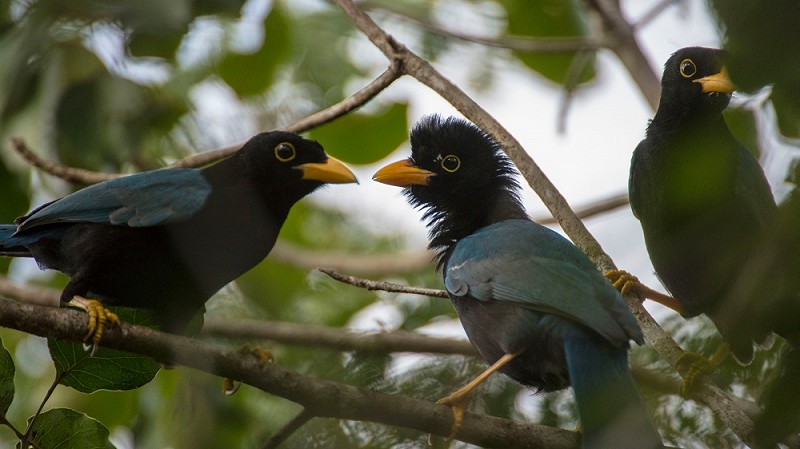 Yucatan Jay Cyanocorax yucatanicus (Alberto Martinez)
Yucatan Jay Cyanocorax yucatanicus (Alberto Martinez)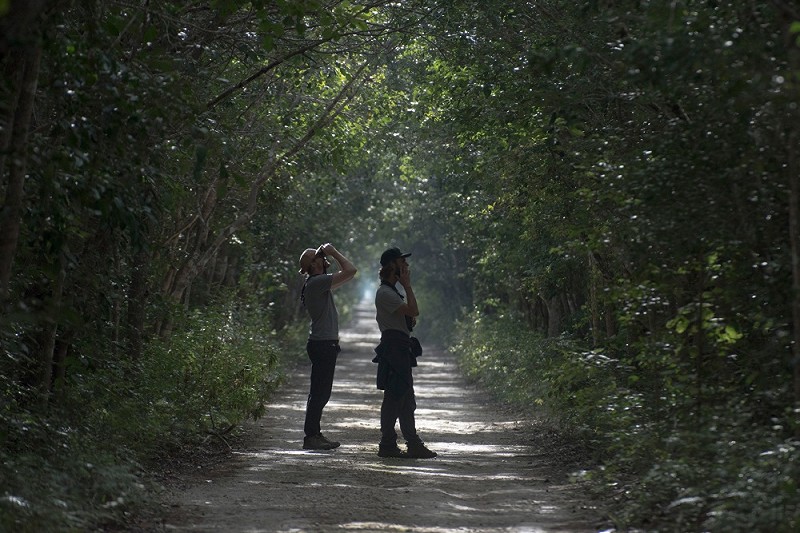 In search of the jay (Alberto Martinez)
In search of the jay (Alberto Martinez)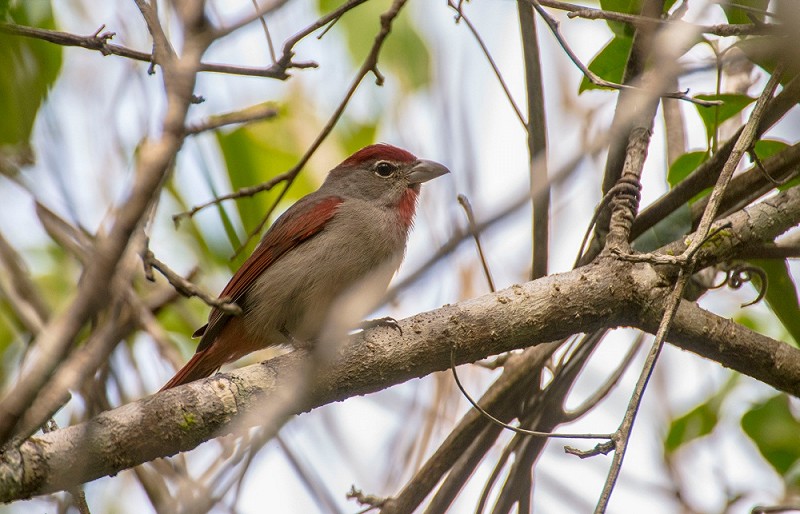 Rose-throated Tanager Piranga roseogularis (Alberto Martinez)
Rose-throated Tanager Piranga roseogularis (Alberto Martinez)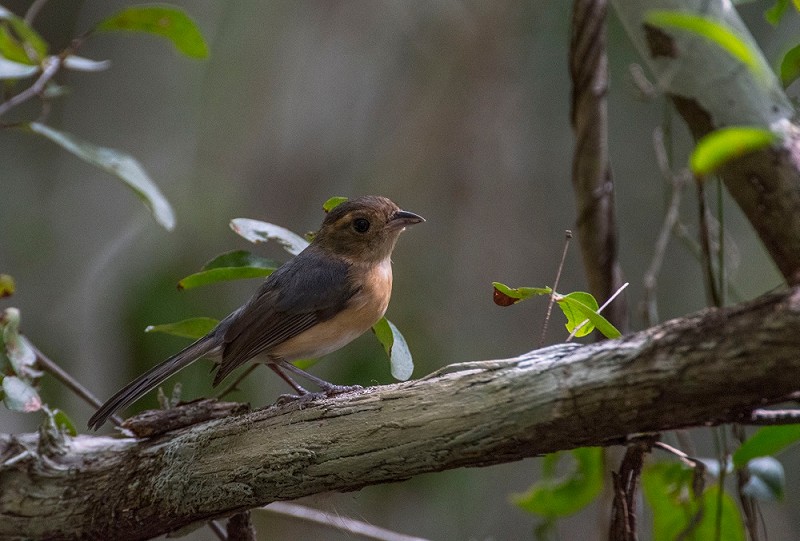 Grey-throated Chat Granatellus sallaei female (Alberto Martinez)
Grey-throated Chat Granatellus sallaei female (Alberto Martinez)
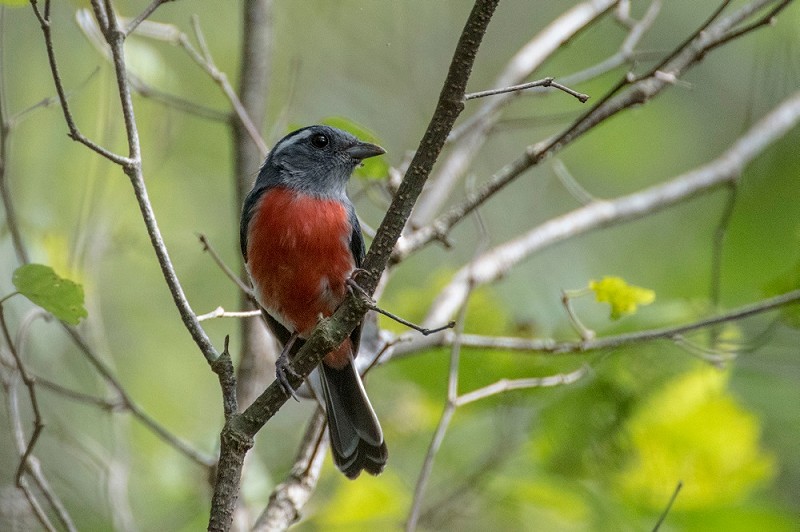 Grey-throated Chat Granatellus sallaei male (Alberto Martinez)
Grey-throated Chat Granatellus sallaei male (Alberto Martinez)
November 24th HUNTING FOR OCELLATED TURKEYS ON THANKSGIVING
Yesterday we couldn't find any Ocellated Turkeys - this bird is common further south around the famous Tikal Archaeological Site, but rare in the dryer northern part of the Yucatan Peninsula - so today we were on a mission; we had to find the Turkey! There was one problem however, today was Thanksgiving, not the best time of the year to look for turkeys haha. We checked corn field after corn field and drove across countless dirt roads, but no turkeys. I guess they were hiding on the worse day of the year to be a Turkey.
In the late morning Michael, Alberto, Rene and I drove north towards the coast to look for two range restricted endemics, the Yucatan Wren and Mexican Sheartail. The Wren proved easy and the Sheartail even more so. We found several gorgeous males on the feeders of Ria Maya Restaurant while having a delicious seafood lunch. A great combination.
The endemic Yucatan Bobwhite proved more difficult to find and it was only in the dying seconds of the day that we found a covey of these cute little quails.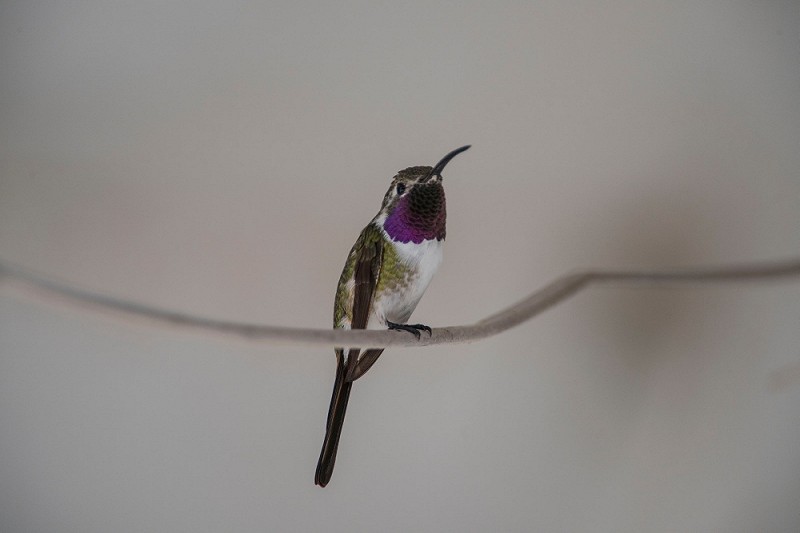 Mexican Sheartail Doricha eliza (Alberto Martinez)
Mexican Sheartail Doricha eliza (Alberto Martinez)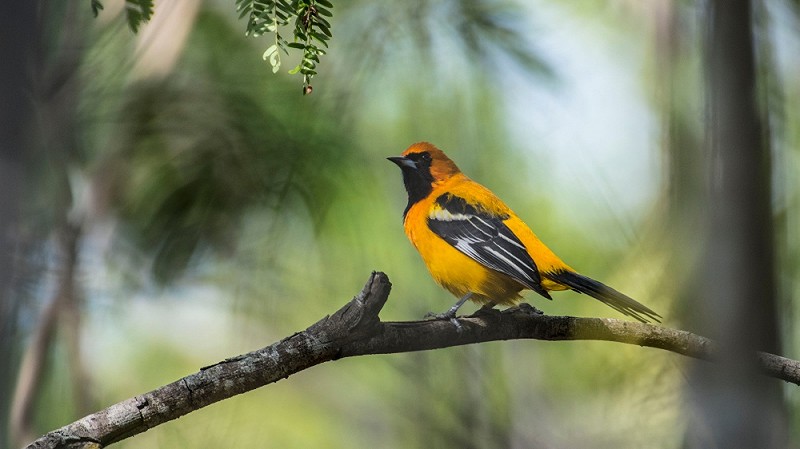 Orange Oriole Icterus auratus (Alberto Martinez)
Orange Oriole Icterus auratus (Alberto Martinez)
November 25th ROUNDING UP YUCATAN
We had one more morning before we had to catch our afternoon flight from Merida to Tuxtla Cutierrez. We spent most part of the morning on a fruitless search for Ocellated Turkey. In the late morning we made several stops in the mangroves which resulted in excellent looks at the local subspecies of Clapper Rail, several Mangrove Warblers and a heard-only Rufous-necked Woodrail.
In the afternoon we gave it one last shot at Ocellated Turkey around the Archaeological Maya site of Sihunchen, but again no Turkeys. I guess they were still too much in shock from Thanksgiving and hiding somewhere deep in the Yucatan forests...
November 26th FROM TUXTLA GUTIERREZ AL THE WAY DOWN THE PACIFIC SLOPE
After another short nights rest we left our hotel in Tuxtla and headed for Elcote Biosphere Reserve to look for the enigmatic Nava's Wren. This endangered species with spectacular long bill and beautiful simplistic song lives only in the limestone forests of the Mexican Provinces of Chiapas and Oaxaca, where it creeps across the ground among sharp rocks.
When we arrived the weather was not in our favor. It was mildly drizzling and quite misty, not ideal conditions for a shy and inconspicuous wren. We had to check out about five different sites before we finally got a response which resulted in superb views of this often hard to see bird.
After tracking down the other Mexican endemic at Elcote, the Long-tailed Sabrewing, we drove back to Tuxtla and up to the dry ridge of the spectacular Canyon el Sumidero. Our target here was the Belted Flycatcher, a bird we had been trying hard for, but missed in Guatemala.
This time the bird cooperated and we had great views of a pair with a very showy Ticket Tinamou as a welcome bonus. Lower down we found Varied Bunting and the beautiful Red-breasted Chat.
A short stop at the Tuxtla Zoo - I never thought I would be birding in a zoo this Year - didn't result in the hoped for Northern Potoo, but did materialize in a couple of endemic Green Parakeets. Luckily we got in for free thanks to Albertos Mexican style smooth talking with the - female - guard.
From here we headed west down the Pacific Slope in a race against the clock to get to the site for Giant Wren before dark. En route we quickly picked up the exquisite endemic Rose-bellied Bunting. We arrived just in time at the coast because right at sunset we found a family of the spectacular Giant Wren, the largest wren in the world. Half an hour later we found our last new bird for today, a showy Pacific Screech-owl.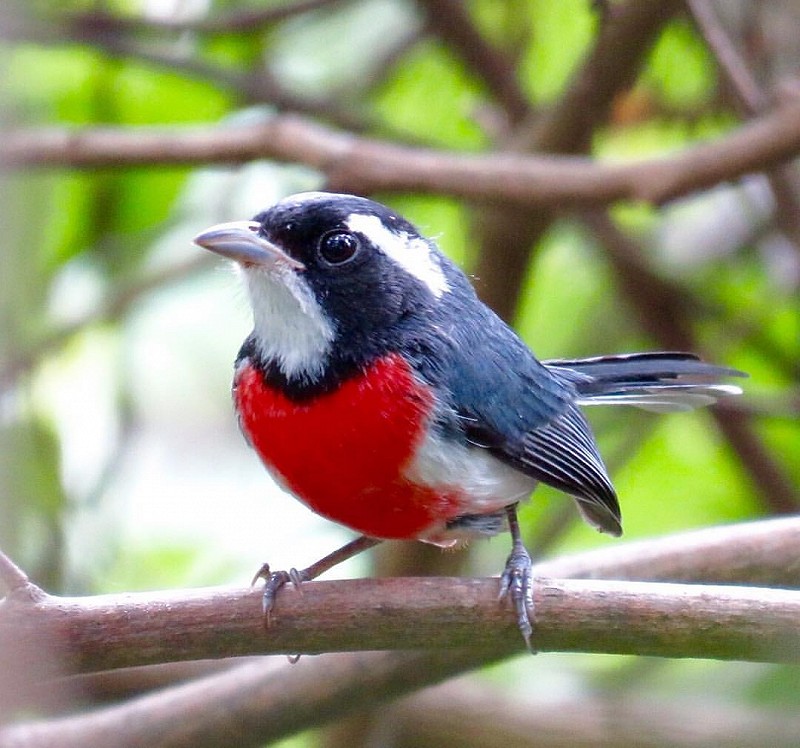 Red-breasted Chat Granatellus venustus (Arjan Dwarshuis)
Red-breasted Chat Granatellus venustus (Arjan Dwarshuis)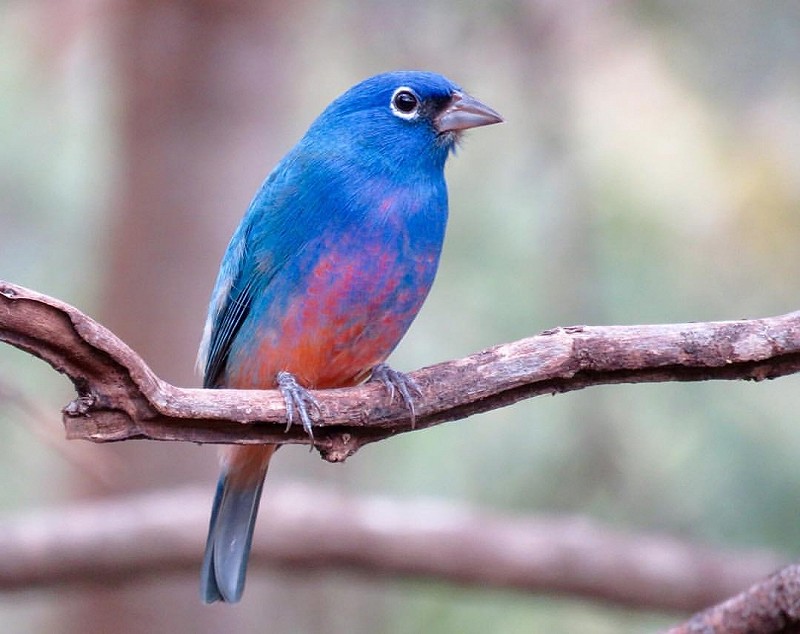 Rose-bellied Bunting Passerina rositae (Arjan Dwarshuis)
Rose-bellied Bunting Passerina rositae (Arjan Dwarshuis)
November 27th A POISONOUS APPLE ...
The most important bird to find this morning was Cinnamon-tailed Sparrow which is restricted to the Isthmus of Tehuantepec. As expected it was windy this morning - it is always windy on the Isthmus - but I wasn't expecting a freaking hurricane. Imagine finding a sparrow when standing straight is already next to impossible. Miraculously we located a pair of Sparrows after just half an hour of searching. Even more unexpected we also found Green-fronted Hummingbird, a species we could only find here.
We left the windy isthmus and headed south towards Huatulco. Here we would spend the next two nights. In the afternoon we birded the dry forest in the hinterland of this coastal town. We were joined by one of Mexico's best birders, Erik Antonio Martinez. After a bit birding in the dry forest - with Golden Vireo and Colima Pygmy-owl - we headed to the coast to look for Northern Potoo in the mangroves. Here we did something incredibly stupid...
Both Erik, Michael and I took a tiny bite of something that looked like small apples that had fallen of some fruiting tree in the forest. About ten minutes later I got a burning throat and my lips began to tingle. Next Michael started to develop the same symptoms. I started freaking out, we had eaten some sort of poisonous apple! We decided to go to the hospital just in case; better safe than sorry. After the doctor had checked us out she decided that we needed a Cortisone injection to stop the effects of the poison. Now comes the hilarious part. She decided to give these shots with a syringe the size of a baseball bet... I was the first to get the shot in my arm at which point Michael and Erik started to look a little pale. Next up was Michael who at the moment he saw blood passed out. After waking up half a minute later Erik started to look as pale as a ghost so the nurse had to put him on oxygen. Finally after two hours we were out of the hospital feeling like an idiot. Note to self: stay away from poisonous fruits from now on...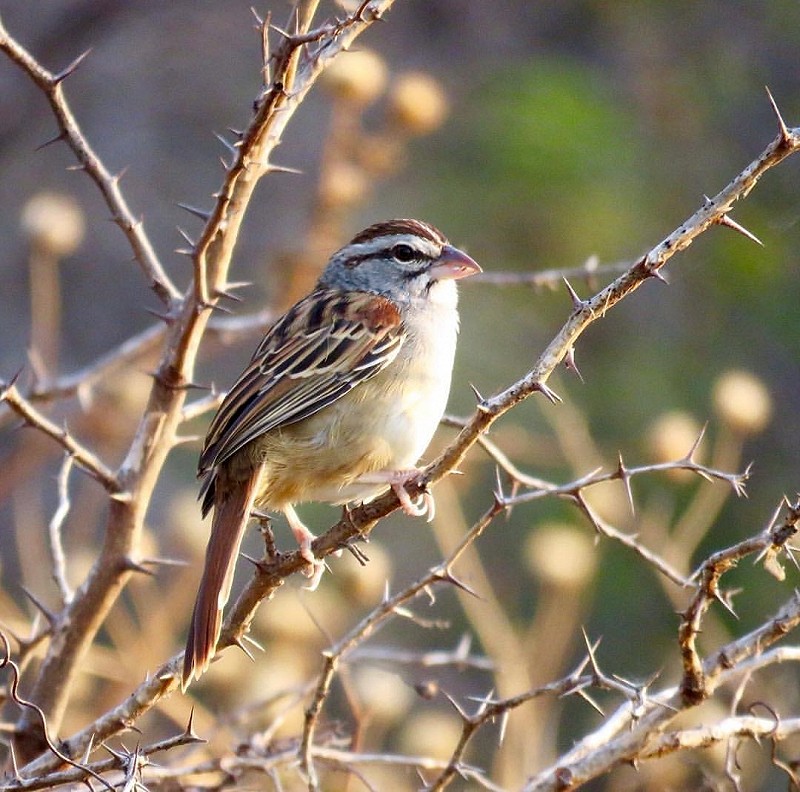 Cinnamon-tailed Sparrow Peucaea sumichrasti (Arjan Dwarshuis)
Cinnamon-tailed Sparrow Peucaea sumichrasti (Arjan Dwarshuis)
November 28th BIRDING THE PACIFIC SLOPE OF OAXACA
Early morning Erik, Alberto, Michael and I drove up to the more humid Pacific slope above Huatulco. As it got light we started roadside birding and quickly started to find new birds. One of the main targets was the threatened Oaxaca Hummingbird. We had no trouble at all finding this species feeding along the roadside. Cinnamon-sided Hummingbird proved far more challenging and only after a whole morning of searching Michael finally found one. Other good birds up here were Wagler's Toucanet and Grey-crowned Woodpecker.
In the evening we tried our luck at a stakeout for Lilac-crowned Parrot, but unfortunately only White-fronted Parrots flew by on the way to their evening roosts.
November 29th HITTING THE JAY-SPOT!
I'm always very excited to go on a pelagic and today was no exception. At 6 AM sharp Erik, Alberto, Michael and I were ready and pumped up at the Huatulco docks and after a quick safety instruction from the captain - NOT, this is Mexico - we set out to the edge of the continental shelf. The great thing about Huatulco is that the shelf is only three miles of shore, so even for a Mexican boat that goes less than three knots it takes less than an hour to get there.
One of the first birds we saw was a Red Phalarope of which we would see hundreds today. We also noted several smart adult Pomnarine Jeagers, always a stunning species to see. When we reached the shelf the real fun started with dozens of Wedge-tailed and Galapagos Shearwaters, now and then a Black-vented Shearwater and several Black and 'Chapman's' Leach's Stormpetrels. A real highlight for me were four species of Booby (Nazca, Brown, Red-footed and Blue-footed) and the smallest Storm-petrel in the world, the Least Storm-petrel. Around 10 AM we decided to head back so that we could make some planned birding stops during the six hour drive to Oaxaca City.
After a quick lunch in Huatulco we said goodbye to Erik and headed north to Oaxaca City. Our first stop in the foothills proved a good one since we found a small flock of the endemic Red-headed Tanager. The real prize however awaited us in the pine forest higher up...
We of course hoped to see the ultra-rare White-throated Jay, but since this beautiful species is almost never seen here we thought there was zero chance. The Jay however had other plans. Michael played some calls at a random bend in the road and to our amazement a Jay immediately responded! Tense minutes followed - especially when initially everybody but me saw the ultra-skulking bird - but eventually we all got great views!
Tired but very content we reached Oaxaca City where we treated ourselves to a classic mole dinner!
November 30th SWEEPING THE OAXACA VALLEY
The dry Oaxaca Valley is one of the most endemic rich areas in Mexico. Some are easy to find, but the most wanted birds are all notoriously difficult. Normally one would take at least three or four days to track these birds down, but since my Biggest Year doesn't quite qualify as 'normally' we had only 1,5 days in the valley.
We started our first day birding the entrance road to the famous Monte Alban archaeological site. Altought weather conditions were perfect we struggled to find any of the star birds and after 9 AM we decided to try our luck somewhere else. We drove through the city and drove up the north slope of the Oaxaca Valley. Despite the hot wind still conditions we were far more successful here with a pair of Oaxaca Sparrows and even better two gorgeous Slaty Vireos.
Next up was one of the hardest and most-wanted birds in Oaxaca, the endangered Dwarf Jay. To find this bird we drove up into the old growth pine forest at around 3000 meters altitude. Just half an hour after our arrival we found a big flock with Grey-barred Wrens and several other largish birds and with them were three stunning Dwarf Jays! Nice!
We drove down again and east towards the town of Teotitlan. Above this town there are some nice shrubby hillsides where my friends Jelmer Poelstra and Bas Garcia had seen a Dwarf Vireo a couple of days earlier. There tip was spot-on because right where they had seen it we found this rare species. Thanks boys!
We finished the day in style, with an owl. Several Whiskered Screech-owls gave fantastic views in the pine forest above Teotitlan.
December 1st BIRDING AMONG ANCIENT ZAPOTEC RUINS
After yesterday's successful run through the Oaxaca Valley there were only few targets left. For the first one - the Ocellated Thrasher - we headed up to the famous Monte Alban Archaeological Site. Normally the site opens to the public as late as 8 AM, but after Alberto 'sweetlips' Martinez had a little chat with the female guard we were in at 7 AM, for free!
What an amazing experience, we had the whole 2000 year’s old Zapotec City to ourselves! This site is about as spectacular as it gets and I must say I was deeply impressed. More importantly we found a pair of Ocellated Thrashers - again right were Jelmer and Bas had seen it a couple of days before - and even better a young male Beautiful Sheartail, a rarely reported species.
From the late morning onwards we could do things on a more relaxing pace, especially since we found Grey-breasted Woodpecker with ease. This meant looking for North-American passerines and delicious local food on a typical Oaxaca market. For a moment there I felt like your ordinary tourist.
At the end of the day Alberto dropped Michael and me off at the airport for our flight to Mexico City.
Alberto, thank you so much for everything. You are a fantastic birder and a great travel companion.|
Arjan Dwarshuis
http://www.arjandwarshuis.com/#biggestyear
http://world.observation.org/arjan.php
PLEASE MAKE A DONATION NOW
Discussie
Gebruikers van het forum gaan akkoord met de forumregels.



















